Last Chance to Catch NYC's Holiday Notalgia Train
We met the voices of the NYC subway on our nostalgia ride this weekend!

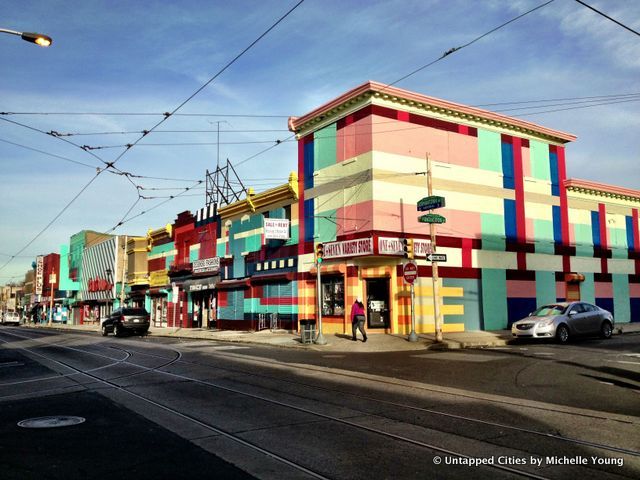
In North Philadelphia, around Germantown and Lehigh Avenues, an entire neighborhood has been repainted in bright, fun colors as part of the city’s Mural Arts Program. We got a chance to walk through with the artists, Dre Urhahn and Jeroen Koolhaas, who are most well-known for their work painting the Santa Marta favela in Rio de Janeiro.
The project was called Philly Painting, and Dre and Jeroen who are originally from Holland, were invited to be artists in residence in 2012. Their work goes beyond aesthetics however, their ultimate goal is to use art to transform and revitalize neighborhoods. Though they were invited by the mayor of Philadelphia, it was important to them that those in the neighborhood “understand the reasons why we’re here,” Dre tells us.
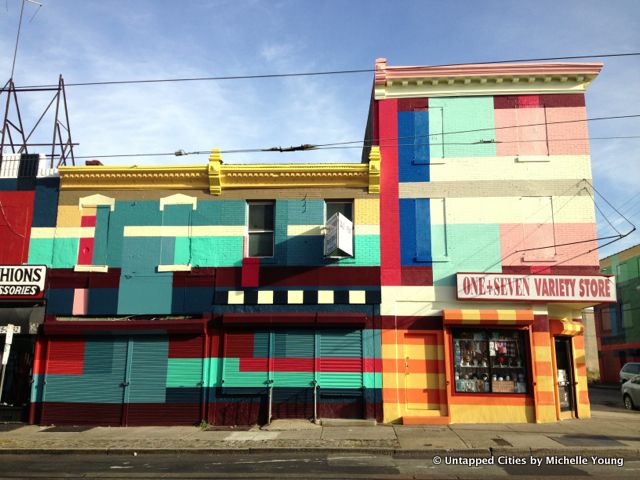
54 storefronts were painted as part of Philly Painting
To that end, the partnership with Dre and Joroen is well-calibrated. Joroen figures out the color palette and “toolbox of shades.” He worked with the business owners and residents, going store to store to ask for approval and get their feedback. Says Dre, “Now it looks like it’s all connected, but we got one approval here, one approval here. This person wanted it green, that person wanted it pink. The whole idea of this design is to make something that everyone could put their own individual effort in, but at the end it still fits into each other.”
Dre on the other hand navigates the tricky micropolitics of race and money in this neighborhood. He also managed the hiring and staffing. Dre tells us, “If you paint a whole neighborhood, you have to be incredibly careful.”
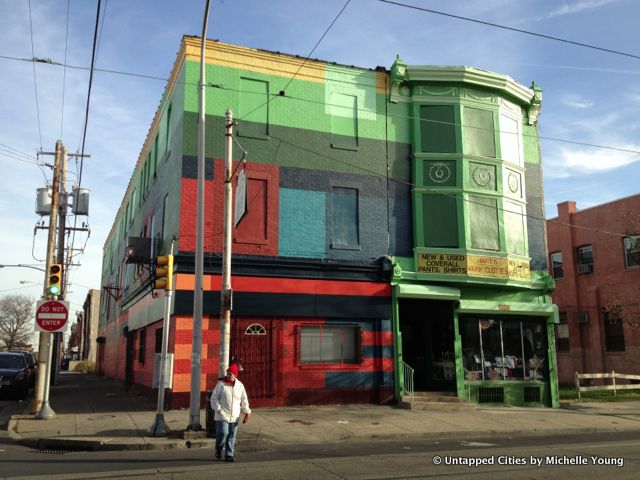
They worked with local organizations, like bringing in workers from the halfway house as day laborers and with the Philadelphia Housing Association that maintains vacant lots and transforms vacant housing. They became embedded in the community group right where they lived in the neighborhood. The 30-year old organization has grown organically, offering cart classes, job training, resume building. In an area with 26.4% unemployment, Philly Painting could make a noticeable impact.

Dre is proud of the work they’ve done, saying, “At the end of the day, I think we created a work that people can feel that they own. That’s the hardest part.” But he’s also concerned about the life of the project, after it’s completed. “Here you build a crew, a feeling, a vibe, momentum. When you’re done, what happens then?”
Dre and Joroen plan to return to the favelas in Rio, with learnings from their time in Philadelphia. This time, Favela Painting will be a permanent, self-sustaining fixture with revenue generating opportunities. Says Dre,
In our next project in Rio, we figured out a way to build the first self-sustainable art project, ever. If everything works right, it will never stop for the rest of my life. I can step away from it, and it will just continue.
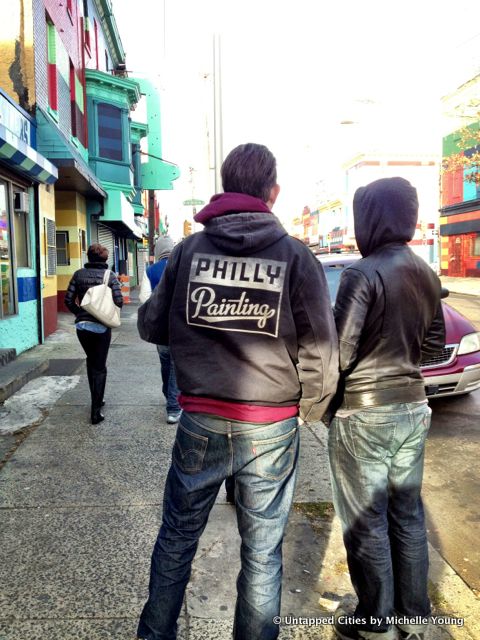
We also talked a little about their project in Rio and where the idea of the team t-shirts came from. Dre says the uniforms were really as a means of self-preservation because the painters were getting shot while in Rio. The police in armored vehicles thought the painters had guns in their hands, when they were just holding brushes.
We started making uniforms that said pintor on the front and on the back. You explain who you are, no need to be scared of us. Then we went to the police and brought the shirt [telling them] “This is our uniform, we are from Holland, we’re doing this project, the media is involved. Don’t shoot at us. Then at least we had our painters secure.”
An unanticipated consequence of the tees were the branding and team-building effects. After that “everyone started wearing it, and everyone wanted to wear it. You can see the difference in pride. The project is finished now, but you’ll run into people wearing it that used to be in the project.” And Dre was right, we later ran into someone on the streets of Paris wearing the Philly Painting t-shirt.
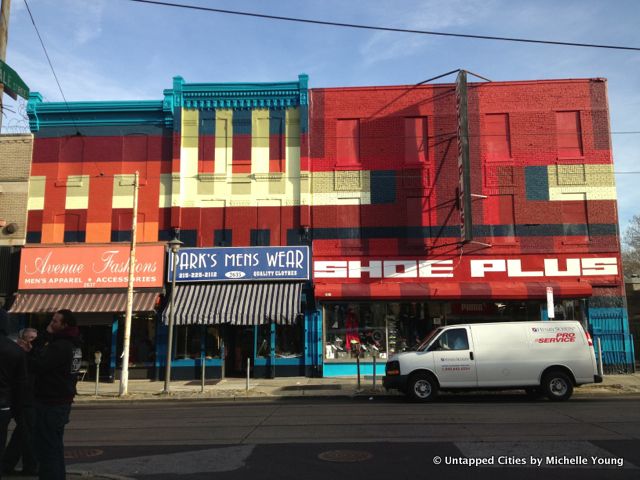
The project has also renewed some optimism in the neighborhood again. Dre pointed out a poultry store that had been closed for several years. The owner came back yesterday and told them, “Let me give it another shot.”
At the end, we asked Dre whether he had any last wishes for the project. He said they had hoped to paint more of the grates on the storefronts. “At night the grates are down. we weren’t able to paint all of them but you see over there, it makes a big difference.”
If you find yourself in Philadelphia, take a detour over to Germantown and see the result of this collaboration between artists, the city, and residents. Read more about Dre and Jeroen’s work in Rio de Janeiro.
Get in touch with the author @untappedmich.
Subscribe to our newsletter